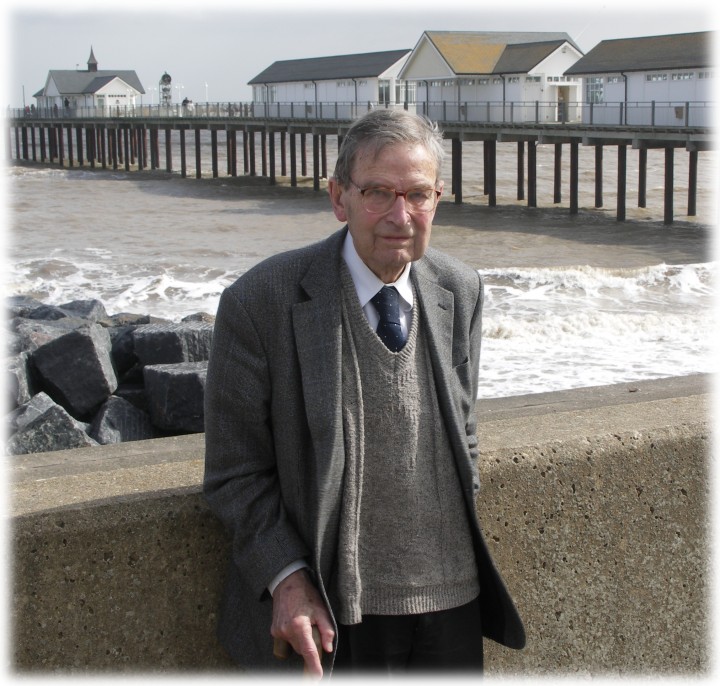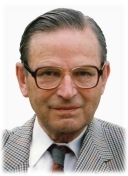 George Plunkett 1913-2006 |
1913: Born at home in Dereham Road,
Norwich. 1917-29: Attended Avenue Road and City of Norwich schools. 1929-73: Worked for the local government school health department in Churchman House. Supported the RAF's effort in Leicestershire, North Africa and Italy during WW2. 1931: Started photographing Norwich's changing architecture with an Ensign box camera, upgrading to an Ensign Carbine Number 7 camera in 1932. 1935: Joined the Norfolk and Norwich Archaeological Society. Later its Librarian and a Vice-president. 1947: Married Margaret, a Midwife and Health Visitor from East Dereham, and raised two sons, Philip and Jonathan. 1973-78: Worked for Norwich Union at offices in the city. 1987-90: Books Disappearing Norwich and Rambles in Old Norwich published. 2000: Photographs of old Norwich website goes online. |
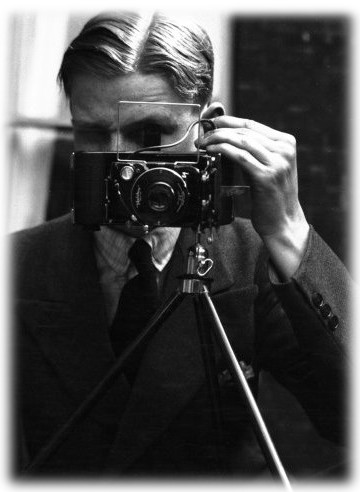 Early LifeGeorge Arthur Frank Plunkett was born in 1913 at home in Dereham Road, the younger child of Frank and Lily Plunkett, and christened at Magdalen Road Congregational Church with the names of his grandfathers and father. In 1916 the family moved to Pembroke Road, George attending Avenue Road Infants School from the following year (head teachers Miss C L Pyle and Miss L A Olley). He moved up to the Boys Department at the age of 8 (head teachers F J Smith and F T Oxbury). He joined the 12th Norwich (Holy Trinity) Wolf Cub Pack, who met in Pelham Hall, Gloucester Street (pack leader Miss Lomax), and in 1924 spent a memorable week with them in South Hampstead (with scout leader G Mallett) visiting the British Empire Exhibition at Wembley and other places of interest in London. In the same year he sat for the scholarship examination and was awarded an Exhibition by the Trustees of the Norwich Town Close Estate Charity. He transferred in September to the City of Norwich School, Eaton Road, under the headmastership of W R Gurley. He was placed in Parker House and commenced in Form 3C1, moving up at Christmas to Form 3B and in subsequent years to Forms 4A, 5A and Shell 2. In July 1928 he sat for and passed the Cambridge University School Certificate Examination, obtaining credit in Art, French and Arithmetic. Not being 16 years old until the following March, he remained at school until then in the Commercial Class (Form 6B), qualifying in book-keeping and Pitman’s shorthand. |
Work (16 to 60) and War-serviceIn March 1929 George Plunkett commenced work as a junior clerk in the Norwich Public Health Department at Churchman House, St Giles’ Street, having been interviewed by the Chairman of the Health Committee, Dr George Stevens Pope, and the Medical Officer of Health, Dr V F Soothill. For the first two years he assisted with work in the Maternity and Child Welfare Section, but in 1931 was transferred to the School Medical Service, being appointed clerk-in-charge of that section in August 1939. He served with the Royal Air Force during the Second World War from January 1941 until February 1946. During the first two years he was on detachment from RAF Cottesmore on a decoy site at Willoughby Waterless, Leicestershire: one of four such sites guarding the city of Leicester from night attacks. The sites were situated in fields in the heart of the country and consisted of dummy fires and electric lights scattered about to resemble marshalling yards and faulty factory blackouts. |
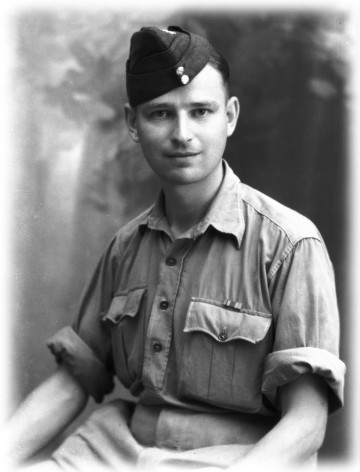
In October 1942 he was sent with others on a two week course dealing with dummy flare paths and the netting of Spitfires and Hurricanes for camouflage purposes. This course was held at Sound City Shepperton, the headquarters of Colonel Turner’s camouflage and decoy department of the Air Ministry. In November he was posted temporarily to New Romney, Kent, to assist in the erection and manning of a dummy airfield (assembling models of Spitfires and Hurricanes under cover of darkness). It was whilst here that he thought his number was up, when the train he was riding came under fire from an enemy aircraft. By remarkable luck, the steam-engine’s boiler exploded after being hit, with its flying debris in turn bringing down the fighter. He returned to Willoughby in December only to be posted overseas in January 1943. Service in North Africa took him to Setif, Bone, Souk-el-Arba and La Sebala near Tunis; in Sicily to Borizzo near Trapani; and in Italy to Grottaglie near Taranto, Pomigliano d’Arco near Naples and Foggia. The intended purpose was the operation of dummy flarepaths to attract enemy bombers away from allied aerodromes but their equipment being far superior to that in use for the genuine thing, he was posted on detachment with three others to illuminate airstrips for 255 Night Fighter Squadron (Beaufighters). On cessation of hostilities in Europe he was posted to No 6 Base Personnel Office at Portici, Naples, for clerical duties, and reached the rank of Corporal. While there, he developed a love of opera, attending many performances at the San Carlo opera house. In April 1946 he returned to work in Norwich at the Health Department, where he met his future wife Margaret. In November 1947, at the parish church of Thorpe St Andrew, they were married by the rector, the Reverend R Fielding, and made their home nearby in Margetson Avenue. There were two children: Philip Charles (1950) and Jonathan George (1955). |
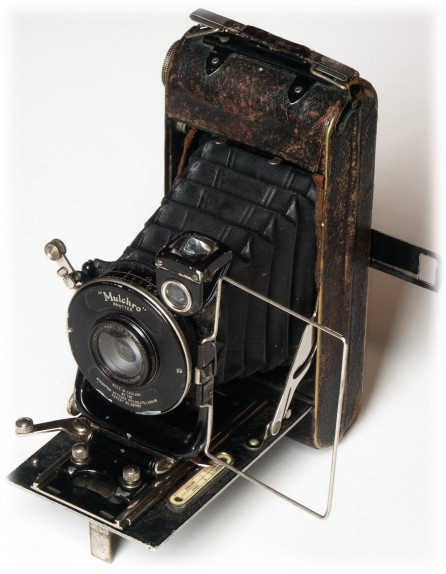
The Ensign Carbine Number 7
|
Photography and ArchaeologyGeorge Plunkett acquired a 'box' camera in 1931 and started building a photographic survey of Norwich. Aware of its limitations, he replaced it the following year with an Ensign Carbine number 7 which lasted the rest of his life. He developed and printed over 1000 rolls of black and white film himself, arranging the contact-sized prints in albums according to subject matter or street name. From 1938 to 1952 he was a member of the Norwich and District Photographic Society and had a number of lantern slides exhibited at several of their annual exhibitions held in the Norwich Castle Museum. Certificates of merit were awarded in 1949 and 1951 for his photographs of the misericords in Blakeney church, and the transept roof at Salle. From 1935 until his death he was a member of the Norfolk and Norwich Archaeological Society. He had five papers published in the Society’s Transactions: Old Norwich Doorways (1942); 17th Century Ceiling at 12 St Stephen’s Street, Norwich (1944); St George (Middle) Street, Norwich – In Memoriam (1970); Churchman House, St Giles’ Street, Norwich (1975); and Norfolk Church Screens (1865 Survey) (1979). All except the last-named were illustrated with his own photographs. The paper on Norfolk Screens resulted from his transcribing the 320 replies which had been received in response to a questionnaire sent out by the Archaeological Society in 1865 to the Norfolk Clergy. In 1947 he was elected a member of the Society’s Council, and held the post of Honorary Librarian from 1952 to 1962 and 1966 to 1988. In June 1972 he was additionally elected as a vice-president to the Society. He also was a member of the Royal Archaeological Institute from 1951 to 1970, publishing a paper entitled Norwich Guildhall. |
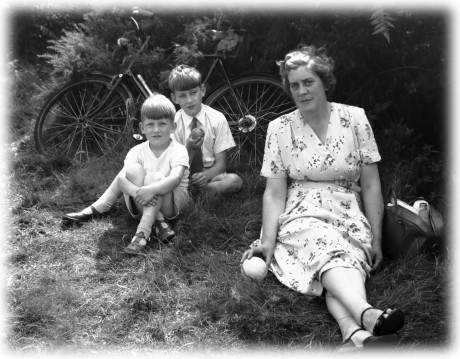 Freedom of the CityIn September 1966, during the mayoralty of Alderman Harry Perry, George Plunkett was made a freeman of the City of Norwich, by inheriting the honour from his father. The regulations had been modified four months previously so as to allow all sons of Norwich freemen to take up their freedom when of age, whether or not born before their fathers were admitted. In 1967 the family moved back to the quiet surroundings of Thorpe St Andrew after a spell of ten years in College Road. In June 1970 he and his wife attended by Royal Invitation (and on the recommendation of the President of the Archaeological Society, Canon Thurlow) one of the Afternoon Parties held in the gardens of Buckingham Palace. The Queen and Prince Philip both walked among the visitors. |
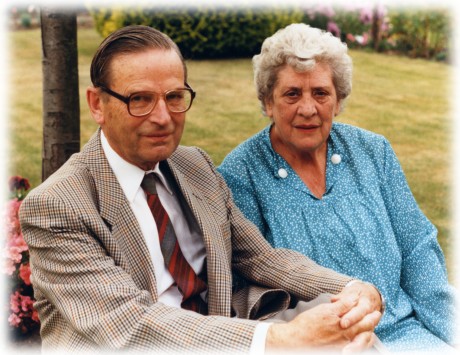 Work (60 to 65)In March 1973 George Plunkett voluntarily retired from service in Local Government having reached the age of 60. At a gathering of colleagues in the former dining room of Churchman House, he was presented by Dr J R Murdock on behalf of over eighty members and ex-members of staff with an electric lawn-mower. A few weeks later, in the Mayor’s Parlour at the City Hall, he was presented with a long service certificate and a TV by the Lord Mayor, Dick Seabrook, on behalf of Norwich Corporation. Temporary employment was then obtained in the Motor Underwriting Department of the Norwich Union Fire Insurance Society, Surrey Street, Norwich. In February 1976 he was transferred to the Personal (policies) Department at Norvic House on Chapel Field Road, moving back with this department to the Fire Wing at the Head Office in Surrey Street in June 1977. Three months later he was transferred to the Royal London Mutual (an affiliated Society of Norwich Union) carrying out the same duties, increasing sums insured (anti-inflation) as indicated by the policy holders, and raising the premiums of certain items to accord with a revised scale of charges. This transfer involved no change of office other than that of moving from one end of the room to the other. He retired from this employment at the age of 65 in March 1978. On leaving he was presented with a pen and scroll signed by members of the department. |

| PublicationsIn September 1987 George Plunkett had a book published by Daltons of Lavenham entitled Disappearing Norwich illustrated by 120 photographs taken by himself mainly during the 1930’s when slum-clearance and street-widening were responsible for the demolition of many buildings of architectural or historical importance. Sales of the book were sufficiently good to justify two reprints in the following years. In November 1990 he had a further book published by Daltons entitled Rambles in Old Norwich. Illustrated by 148 of his own photographs, it was in the nature of a perambulation not only of the four Great Wards of the city but also of the area outside the Walls. Unlike the previous book where all the illustrations were of things no longer existing, in this book a number of views were included of buildings still standing although with a history perhaps not all that well known. In the same month of publication, sadly, his wife died suddenly after contracting pneumonia. |
Later yearsIn 1996 the Norfolk and Norwich Archaeological Society celebrated the 150th year of its existence. In January an anniversary tea-party was held at Suckling Hall and a surprise presentation was made to him of a commemorative clear glass paperweight with a design adapted from the Society’s seal on its face and inscribed with his name. The presentation was made in order to mark his ‘long and distinguished service to the Society’. In 2000, all his photographs of the city were placed on the Internet: his website generating a steady stream of emails from appreciative visitors from around the world. He enjoyed an active and independent life until, at the age of 93 in 2006, he was brought down by a combination of pneumonia and a small stroke following a fall. |
